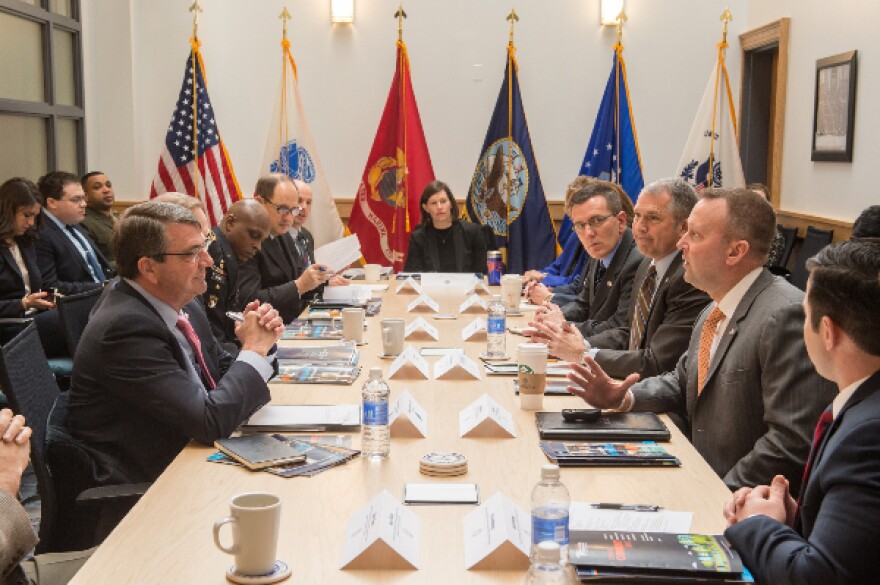Excitement is building at Syracuse University over the potential of the proposed National Veterans Resource Complex. SU officials want to make such a statement that, for the first time in years, they’ve launched a national design competition to select an architect for the project. Mike Haynie is Vice Chancellor and Director of the Institute for Veterans and Military Families at SU. He says the rapid growth and success of the programs at IVMF has presented some infrastructure barriers that keep them from having a local impact.
"We run multiple large conference events in different U.S. cities for our various programs. We've never been able to bring any of those to Central New York. Many of those are 200 to 300 multi-day conferences that will contribute hotel nights, that will contribute catering, food service businesses, etcetera.”
Haynie says IVMF is the fastest growing academic entity at the university. Just a few years ago, they began with a staff of five. Now they’re approaching 60 full-time staff. In that short time, he says the institute has put 35,000 transitioning service members, veterans, and their families through a full portfolio of vocational and skills training. Most of them have had to go off-campus or even outside of the region due to a lack of space. That’s what Haynie hopes will change with the building of the new complex. But he says it goes beyond physical space. It’s also about bridging a gap between the half of one percent who’ve worn the uniform since 9-11…and everyone else…
" There is this profound disconnect socially and culturally between that small minority who have served and the vast majority who have benefited from that service...and are appreciative, don't get me wrong. But that's not the same thing as having that shared understanding of what that experience is all about in a way that cultivates a pathway for that majority to meaningfully engage beyond a bumper sticker and clapping at a sporting event.”
Haynie says it’s that superficial connection that bothers him…
“That one issue represents the thing that scares me the most as we look out into the future because it opens the door to a very isolating experience for the veteran.”
Haynie has a unique dual perspective as a veteran who served 14 years active duty in the air force before joining academia at SU.
A SUSTAINABLE ROLE?
How long will the services of the proposed national veterans complex be needed after major conflicts like Iraq and Afghanistan? In addition to serving as the home for the IVMF, it will also house vocational and educational programs. Haynie says the complex comes at a time when the country is coming off the first extended test of an all volunteer military.

"When you look at the young people going to school at Syracuse University, they know nothing but an all volunteer military. But in reality, it wasn't until 1973 that we moved away from conscription, a draft. Why I bring that up is that we've had a very small percentage of the U.S. shouldering the burden of the last 13 years of conflict."
Haynie says that percentage is one half of one percent. Even though the complex is years away, Haynie says the demand for services will continue for decades.
“Even if we look at the three million or so who've served in uniform since 2001, the need from a public policy and human service delivery perspective represents a 40-year time horizon. What sociologists will tell you is that the height of need represented by the previous generation of veterans is not realized until 30 years after the conflict ends.”
That would apply to those who served in Iraq and Afghanistan.
Haynie says more than two dozen firms have indicated their intent to participate in the design competition for the complex, which is tentatively planned for Waverly Avenue across from the Newhouse complex. Officials hope to narrow it down to a handful of firms next month, and make a final selection in the spring.



